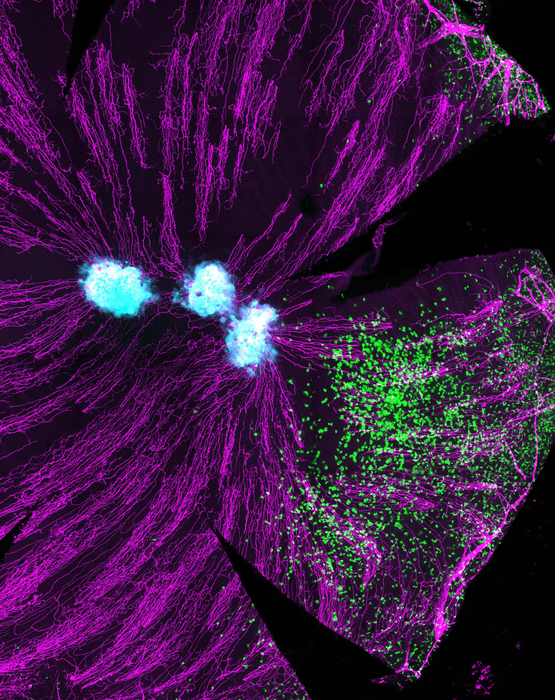Researchers from the Peter Doherty Institute for Infection and Immunity report that the cornea produces a delicate and limited immune response to fight infections without damaging vision. The study, “Corneal tissue-resident memory T cells form a unique immune compartment at the ocular surface,” which appears in Cell Reports, has shown long-living memory T cells that patrol and fight viral infections are present in the cornea. The scientists say their finding upends current thought that T cells are not found in healthy corneas, thus expanding our understanding of the eye’s immune response to infections.
The team used a multiphoton microscope that provides live images of living, intact biological tissues to study cornea cells in mice infected with Herpes Simplex Virus. Their images revealed long-living memory T cells produced in the eyes of mice to fight the infection. The memory T cells remained in the cornea after the virus was eliminated to ward off any future reinfection.
Advanced imaging of the eye in healthy people also revealed immune cells patrolling the cornea—the first time that cells have been imaged moving in human eyes, according to the researchers.
“The eye is considered immune privileged such that immune responses are dampened to protect vision. As the most anterior compartment of the eye, the cornea is exposed to pathogens and can mount immune responses that recruit effector T cells. However, presence of immune memory in the cornea is not defined,” write the investigators.
“Here, we use intravital 2-photon microscopy to examine T cell responses in the cornea in mice. We show that recruitment of CD8+ T cells in response to ocular virus infection results in the formation of tissue-resident memory T (TRM) cells. Motile corneal TRM cells patrol the cornea and rapidly respond in situ to antigen rechallenge. CD103+ TRM cell generation requires antigen and transforming growth factor β. In vivo imaging in humans also reveals highly motile cells that patrol the healthy cornea.
“Our study finds that TRM cells form in the cornea where they can provide local protective immunity.”
“Current understanding that T cells are not found in healthy corneas needs to be reconsidered, as our discovery shows tissue-resident memory T cells entering the cornea and remaining there for long periods,” explains Scott Mueller, PhD, lead author and professor at the University of Melbourne and laboratory head at the Doherty Institute. “Our findings will improve the understanding of how to protect our eyes from infections that cause permanent blindness, such as Herpes Simplex Virus.”
The study also has implications for understanding chronic conditions such as dry eye disease and common eye allergies where unwanted T cells might also cause disease, he added.
The presence of T cells in the corneas was previously not considered, given the eyes produce only a dampened immune response to avoid inflammation that would obstruct vision.


